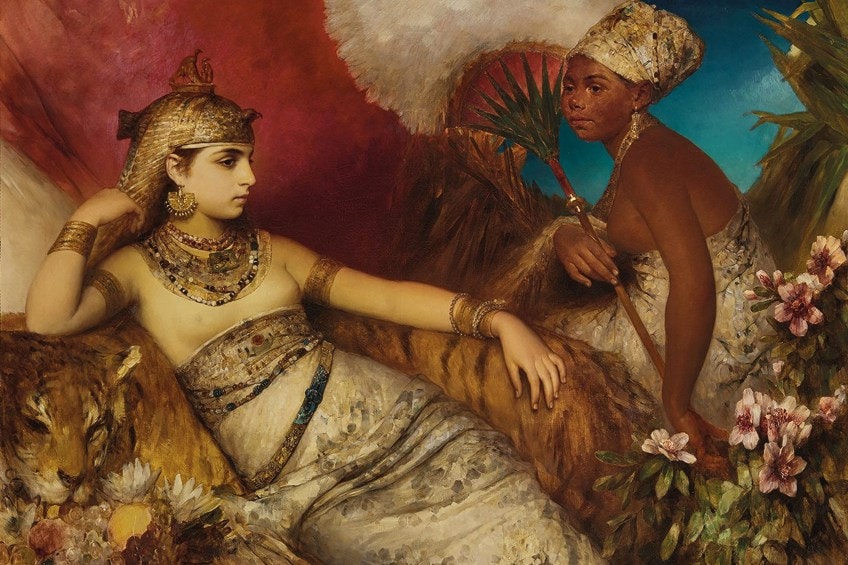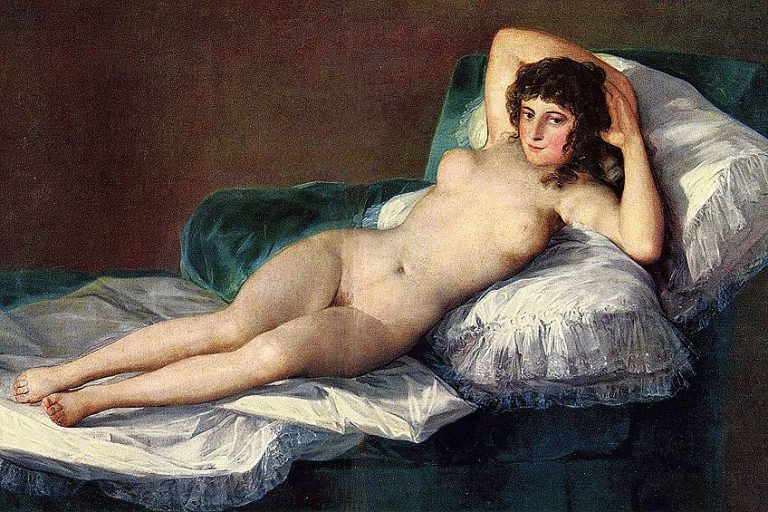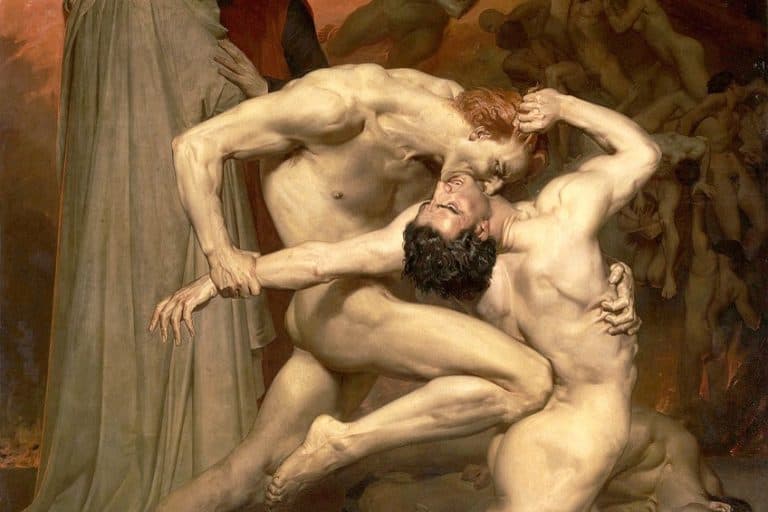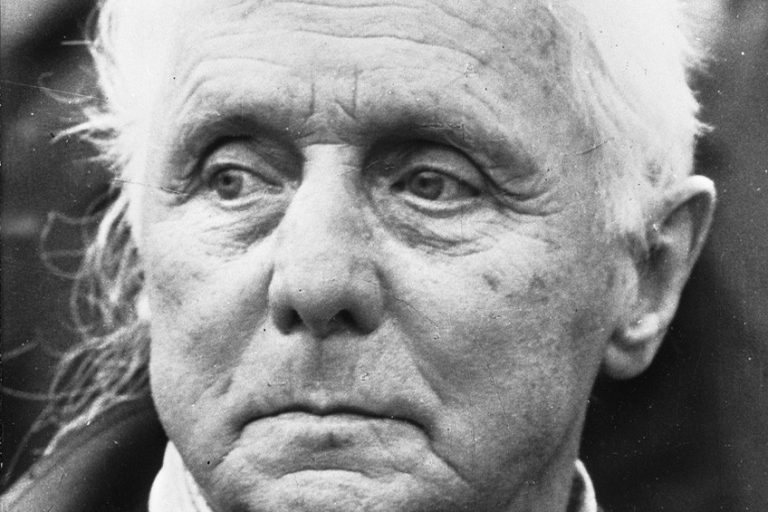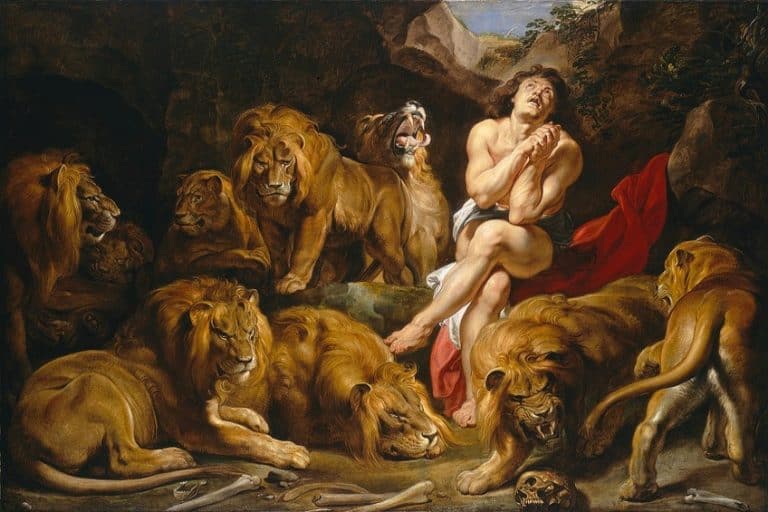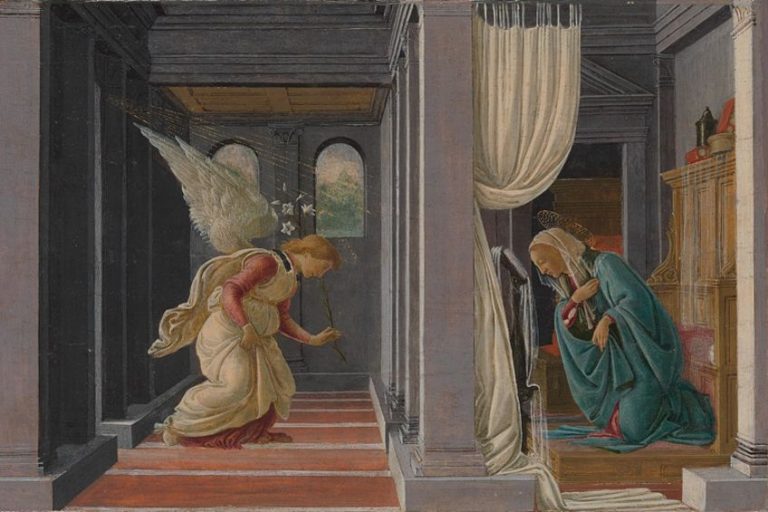Paintings of Cleopatra – Why Was Cleopatra Famous?
Cleopatra, the last pharaoh of Egypt, ruled from 51 BC until her death in 30 BC. Whilst she was loved by her own people, in Rome, she was seen as a cut-throat seductress who bewitched men and made them do her bidding. In more recent history, she is portrayed as a tragic heroine and star-crossed lover. With all of this dramatic mythology, it is no wonder so many artists have chosen to paint the mysterious Queen of the Nile.
Who Was Cleopatra?
Cleopatra’s story is one of the most dramatic tales in history. Therefore, it is no wonder that so many writers, poets, and artists took inspiration from it. Therefore, in order to properly understand depictions of Cleopatra in art, one must first understand the circumstances surrounding her life and death.
The Ptolemaic Dynasty
Although she is known to most as simply Cleopatra, the woman we speak of is actually Cleopatra VII. Born in 69 BC, Cleopatra was the seventh of her name born to the Macedonian royal family of Egypt. It may come as a surprise that one of the most famous pharaohs of Egypt in fact had no Egyptian blood; however, there is an easy explanation for this. In 332 BC, Alexander the Great of Macedonia took control of Egypt after conquering the Persian Empire. Whilst he left the Egyptian culture and society undisturbed, he instated a Greek government to rule Egypt.
When he died, one of his generals, Ptolemy I Soter, came into power in 323 BC and established the Ptolemaic royal bloodline.
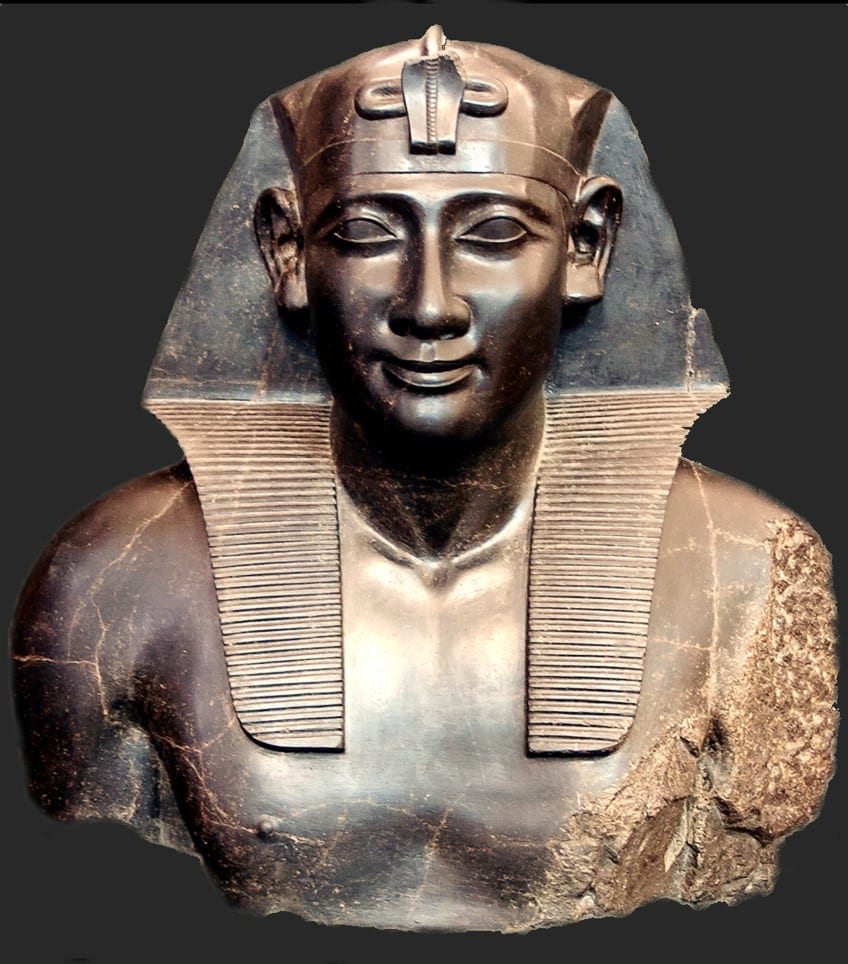
Although they ruled Egypt, they kept their Greek language and culture. Siblings were expected to marry and produce offspring with one another in order to keep the Macedonian bloodline pure. Before Cleopatra reached the throne, her father Ptolemy XII Auletes was Pharaoh of Egypt. He was not very well-liked by the people of Egypt, however, who believed that he was too weak to prevent Rome from conquering them. This was not unwarranted, as Ptolemy XII constantly needed to bribe the Roman senate not to invade Egypt.
This resulted in Egypt having a great deal of debt. Fortunately for him, Rome was too busy dealing with internal political struggles to focus its attention on Egypt.

Cleopatra VII and Ptolemy XIII
During his reign, Ptolemy XII had his two oldest daughters executed for attempting to usurp his throne. Therefore, when he died in 51 BC, Cleopatra became Pharaoh of Egypt. As was their tradition, she was married to her younger brother, Ptolemy XIII. At this time, Ptolemy XIII was only 10 years old whilst Cleopatra was 18.
Thus, she was the primary decision maker, which angered Ptolemy XIII, who tried to have her assassinated so that he could be the first in charge.
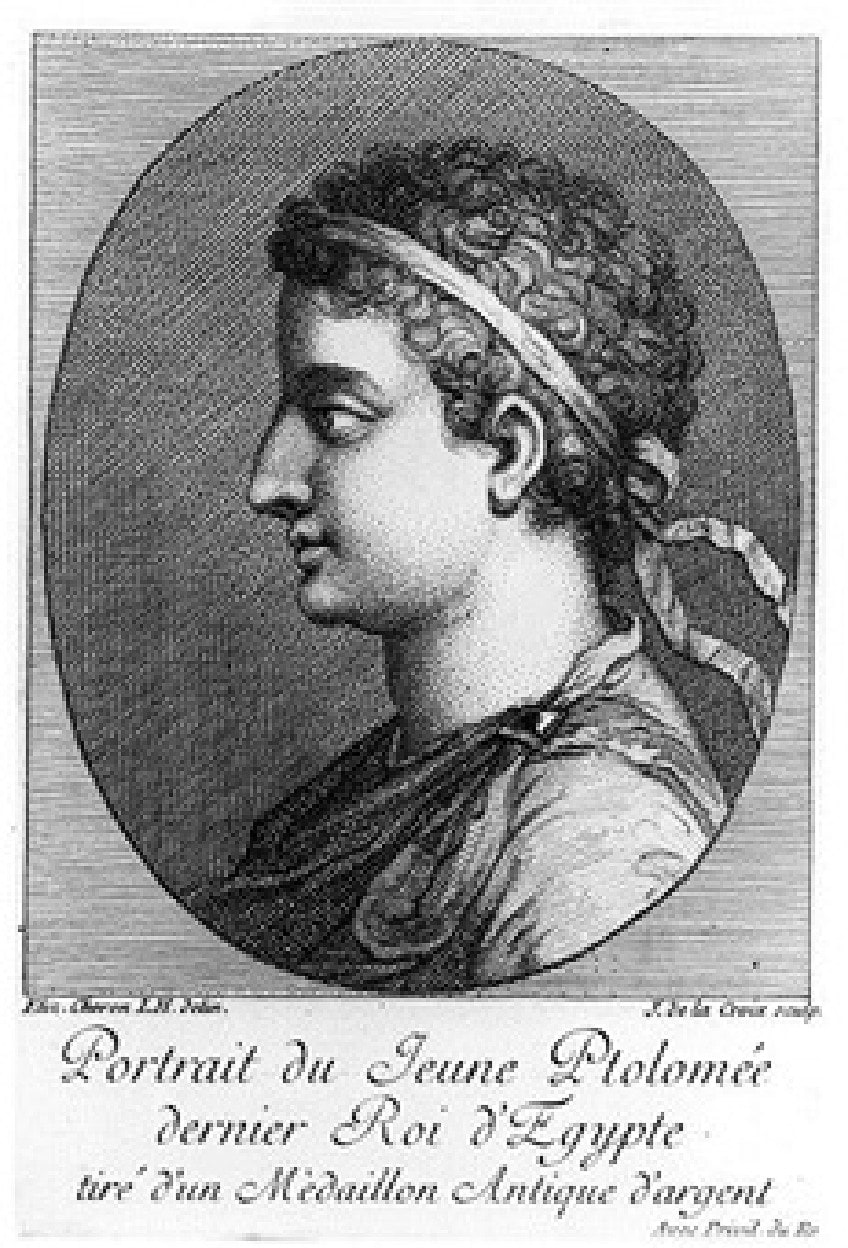
Élisabeth Sophie Chéron (1648 – 1711), Public domain, via Wikimedia Commons
She then fled Egypt and sought refuge in Syria. Although this type of violence may sound shocking to modern audiences, it was very common for Egyptian royalty to have their family members assassinated. Whilst in Syria, Cleopatra managed to gather an army who would fight on her behalf. This resulted in a civil war that took place in Pelusium, which was Egypt’s border with Persia.
Cleopatra realized that her army was failing and that she needed reinforcements, for which she decided to turn to Rome.
Cleopatra and Caesar
In 48 BC, Roman leader Julius Caesar was in Egypt searching for his political opponent Pompey, who had fled his assassination attempts. In order to try to win Roman favor, Ptolemy XIII had his men capture Pompey and behead him. He then presented Pompey’s head to Caesar, who he had invited to Alexandria. However, this had the opposite effect of what he had wished.
Caesar was enraged by the act for a number of reasons.
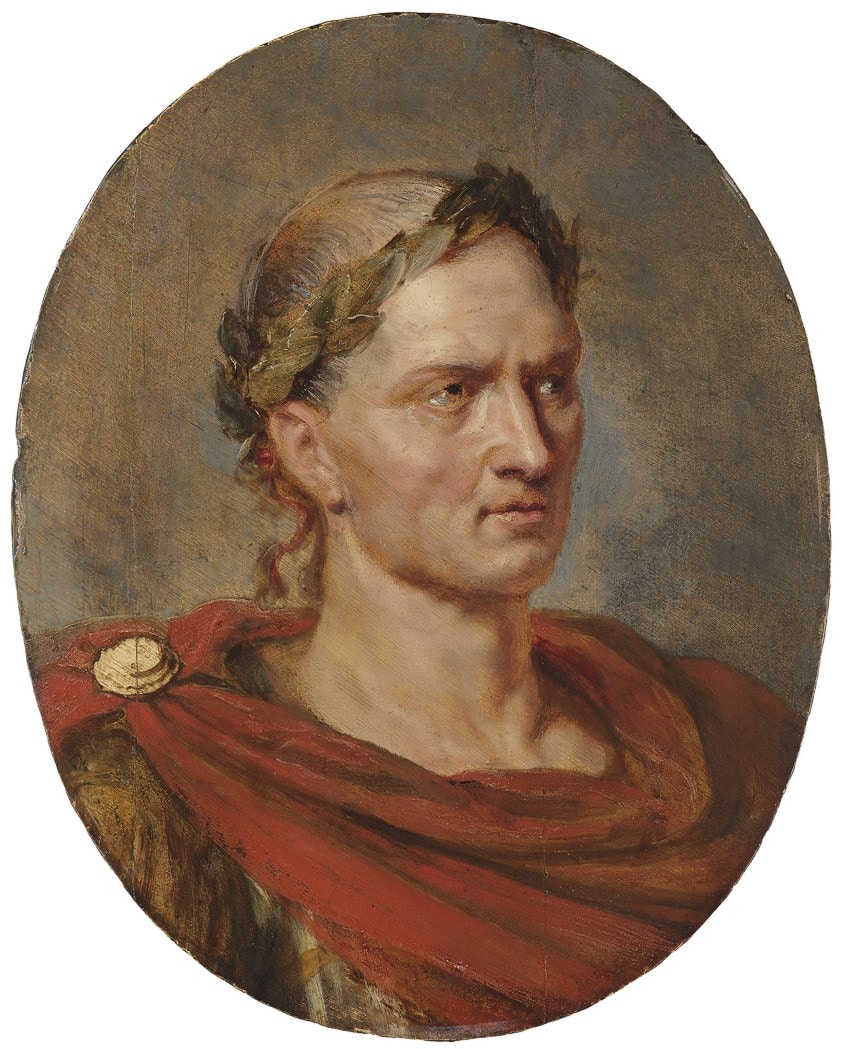
Firstly, Egypt had no right to interfere in Roman politics. Secondly, although Pompey was Caesar’s political opposition, he still deserved an honorable death. It was likely that Caesar would not have even killed him had he agreed to submit to him.
Her brother’s affront to Caesar worked perfectly in Cleopatra’s favor.
It is believed that she had one of her men wrap her in a carpet and sneak her into Alexandria so that she could meet Caesar. The theatricality of this act has inspired many paintings of Cleopatra emerging from her carpet before Caesar.

The two formed an alliance that was mutually beneficial. Cleopatra would receive Roman military support whilst Caesar would remove Ptolemy XIII from power thus achieving retribution for Pompey. It was also in his favor to have a Pharaoh that was indebted to Rome and would provide them with resources such as grain.
In 47 BC, Roman forces arrived in Alexandria, causing Ptolemy XIII to flee. Whilst trying to get away Ptolemy XII drowned in the Nile, making Cleopatra pharaoh once more.
In the same year, she gave birth to a son whom Caesar had fathered called Caesarion. Although Caesar acknowledged Caesarion as his heir, he was already married and so could not make Cleopatra his wife. Thus, she married her youngest brother Ptolemy XIV.

The following year, Caesar returned to Rome with Cleopatra’s sister Arsinoe IV in tow. He did this in order to prevent Arsinoe from trying to usurp Cleopatra’s throne as well as to show the people of Rome that he has not grown soft towards the people of Egypt. Arsinoe was forced to become a sister of the Temple of Artemis. However, she was murdered in 41 BC by Mark Antony’s men.
In 44 BC, on the Ides of March (an important Roman holiday in which multiple religious events occur) Caesar was brutally stabbed to death by members of the Roman senate. Worried that her most valuable ally was gone, Cleopatra had Ptolemy XIV killed before he got old enough to try to usurp her throne.
Thus, she ruled Egypt with her infant son Caesarion.

Cleopatra and Mark Antony
After Caesar’s death, a triumvirate of Octavian (Caesar’s adopted son), Mark Antony, and Lepidus controlled Rome. Each controlled their own areas of the Roman Empire, with Mark Antony in charge of Rome’s eastern territories. In 42 BC, he demanded an audience with Cleopatra in Tarsus.
Although he was already married to a woman named Fulvia, Mark Antony was instantly enchanted by the Egyptian queen. The dramatic arrival of her ships in Tarsus is a common theme of Cleopatra art.
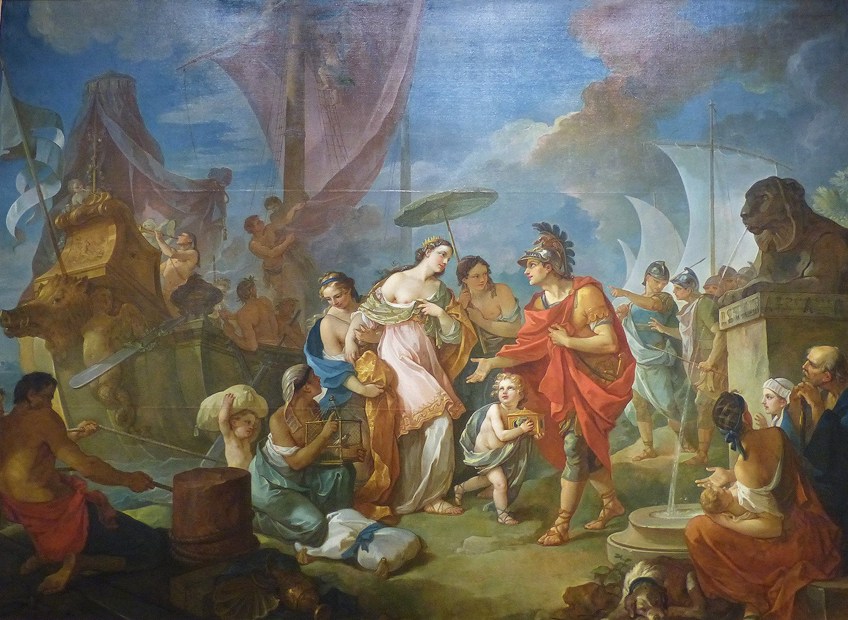
Leaving Fulvia in Italy, Mark Antony followed Cleopatra back to Alexandria. In an attempt to win over the people of the East, Mark Anthony often associated himself with Dionysus (the Greek god of wine, fertility, and conquest) who was worshiped in these parts.
Therefore, many felt he was justified in being the consort of Cleopatra, who was often thought of as the embodiment of Isis (the Egyptian goddess of magic and fertility).
The two were believed to have lived a hedonistic life of merriment in accordance with the cult of Dionysus. As a result, Cleopatra gave birth to twins (Alexander Helios and Cleopatra Selene) in 40 BC. However, Mark Antony was forced to return to Italy to marry Octavian’s sister Octavia in order to solidify his political power. However, in 37 BC Mark Antony returned to Egypt and fathered another son with Cleopatra called Ptolemy Philadelphus.
In 32 BC, Mark Antony divorced Octavia to marry Cleopatra, which enraged Octavian and the Roman republic. Many believed that Cleopatra had married Mark Antony in order to take control of Rome. This belief was exacerbated by her declaring her son Caesarion the true heir of Caesar rather than Octavian. As a result, Octavian declared war on Cleopatra.
This decision was supported by the Roman public, who believed that she had bewitched Mark Antony and intended to make Alexandria the capital of the Roman Empire.
The Death of Cleopatra
The ensuing Battle of Actium took place on the Greek coast. Due to the lack of supporters, Mark Antony had left, his and Cleopatra’s army was not able to defeat Octavian’s army. They fled back to Egypt; however, Octavian’s army soon captured them there. Rather than be defeated by Octavian, Mark Antony decided to preserve his honor by taking his own life.

Octavian took Cleopatra prisoner, intending to take her back to Rome so that he could slay her in front of an audience of his supporters. However, before he could do this, she committed suicide in order to prevent this. There are many versions of how she committed suicide. The most popular of which is that she goaded an asp to bite her on the breast so that its poison would go straight to her heart.
This version is common in paintings of Cleopatra and features in “Antony and Cleopatra” (1607) by William Shakespeare.

Why Was Cleopatra Famous?
Many versions of Cleopatra exist in legend as well as in Cleopatra artwork. Some historians believe this is due to her incredible astuteness and ability to mold herself to best fit any situation. However, it could also be due to the numerous portrayals of Cleopatra in art and literature, in which they reflect her in a way that they wish to rather than her true character.
Her three main archetypes will be discussed below.

Cleopatra the Beautiful
Over the centuries Cleopatra has been known for being an immense beauty. Stories of her rigorous beauty routine include milk baths infused with honey. It was believed that it was her beauty that allowed her to capture the hearts of both Julius Caesar and Mark Antony.
However, in recent years, her beauty has been questioned. In 2009, a coin dating back to around 32 BC was discovered with Cleopatra’s face on it.
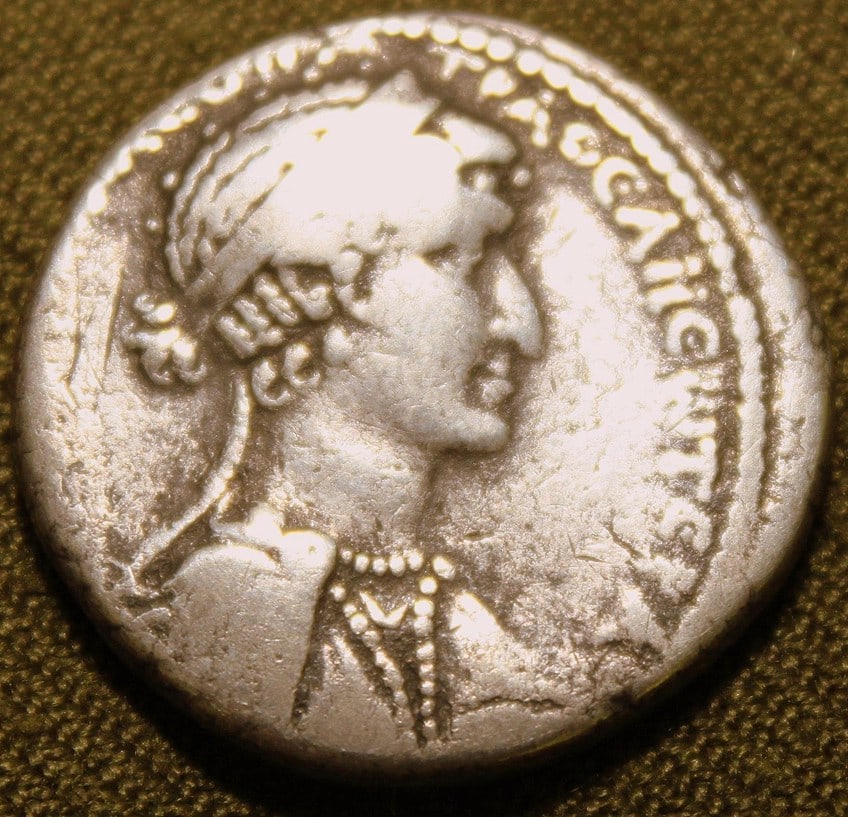
Although it is not a very detailed account, we can see that she did not have the features of conventional beauty that we admire today. This caused historians to turn to ancient accounts of her for confirmation. According to Plutarch:
“For her beauty was in itself not altogether incomparable… but converse with her had an irresistible charm, and her presence, combined with the persuasiveness of her discourse… had something stimulating about it.”
Therefore, it is believed that it was not her body that was so attractive but rather her mind. Her intelligence was undeniable by all those that interacted with her. She was a cunning politician who achieved incredible things for Egypt during her 22 years in power. She was also a brilliant linguist who could speak many languages, which made her a powerful diplomat. She is also the only Ptolemaic ruler to actually learn Egyptian, thus earning her the name Cleopatra Philopator (a title that referred to the love of one’s country).

Cleopatra the Femme Fatale
Cleopatra was often depicted as a dangerous woman, particularly by Roman sources. It is believed that she used her feminine wiles or even sorcery to control men. Some Roman literature even refers to her as the “whore queen”, stating that she used her sexuality as a political tool.
However, to a large degree, this type of statement was used to undermine her intelligence.
Due to her relationship with Julius Caesar and Mark Antony, many believed she was interested in taking over the Roman Empire. This, along with her having her two brothers and sister assassinated led to the notion that she was a cutthroat and devious woman. However, in actuality, her actions were no more brutal than any other monarch of the time.

Cleopatra the Star-Crossed Lover
Another archetype of Cleopatra that is often played upon in Cleopatra artwork is that of the tragic heroine. Many believe that all of her actions in the later part of her life we all in the name of her love for Mark Antony. This was further instilled by William Shakespeare’s Antony and Cleopatra, which painted the two as star-crossed lovers torn apart by fate.
The image of Cleopatra as a heartbroken woman is something that can be seen frequently in Cleopatra art.
Many artists throughout the ages have been intrigued by her dramatic suicide. She is often depicted as a beautiful woman whose exposed breast is being bitten by an asp. Although likely inaccurate, this portrayal of her death plays into the tragic romance of her story.
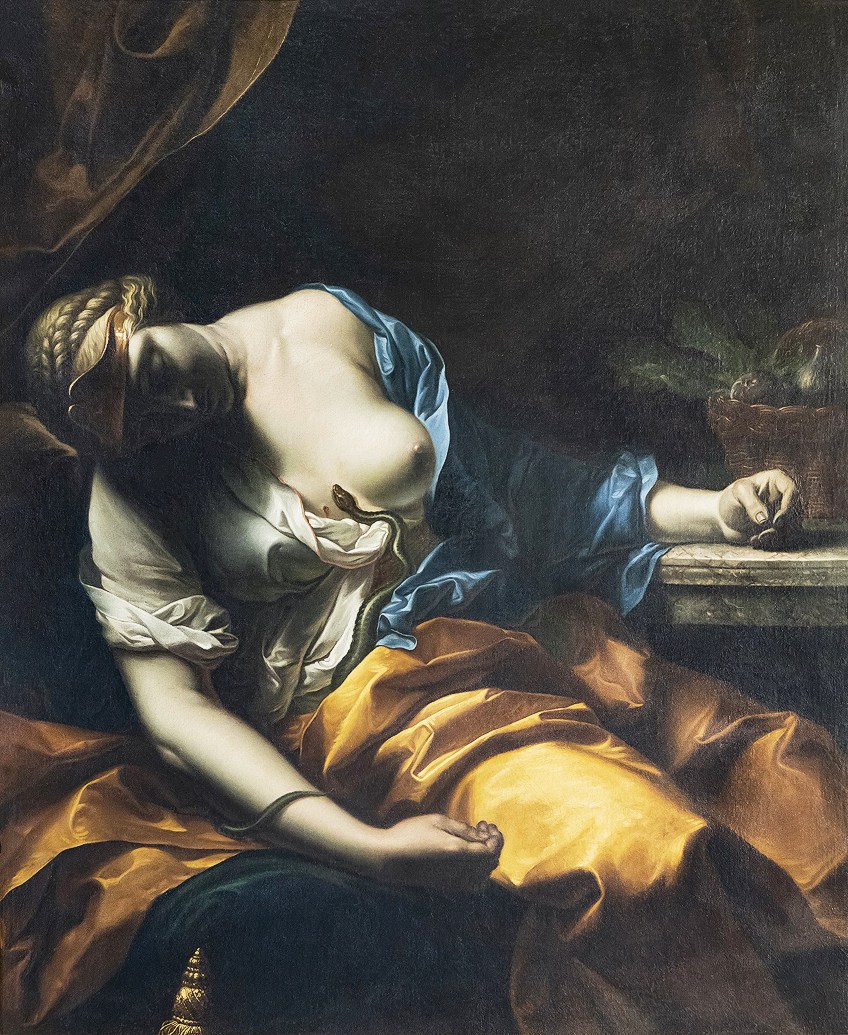
Famous Paintings of Cleopatra
There are thousands of paintings of Cleopatra, which span the centuries. She was such an iconic figure that it is almost certain that artists will continue to create Cleopatra indefinitely. Although there are countless paintings that showcase the famous Queen of the Nile, here are a few of the more well-known ones.
Cleopatra and the Asp (c. 1628) by Guido Reni
| Artist | Guido Reni (1575 – 1642) |
| Date Painted | c. 1628 |
| Medium | Oil on canvas |
| Dimensions | 114,2 x 95 |
| Where It Is Currently Housed | Newport Museum and Art Gallery, Newport, Wales |
Guido Reni was an Italian painter who lived between 1575 and 1642. He is known for his Early Baroque-style artworks which often feature Classical or religious themes. Some of his other renowned paintings include Saint Cecilia (1606) and Bacchus and Ariadne (c. 1619).
“Cleopatra and the Asp” (c. 1628) depicts the legend of Cleopatra’s dramatic suicide.
The painting was commissioned by a merchant Boselli at the request of artist Palma Giovane (who wished to compare it to his own portrayals of Cleopatra). Reni paints her in a sympathetic light and adheres to the beauty standards of the time showing her as fair-skinned with soft features and rosy cheeks. Her pale skin contrasts dramatically with the black background in a way that is typically Baroque.
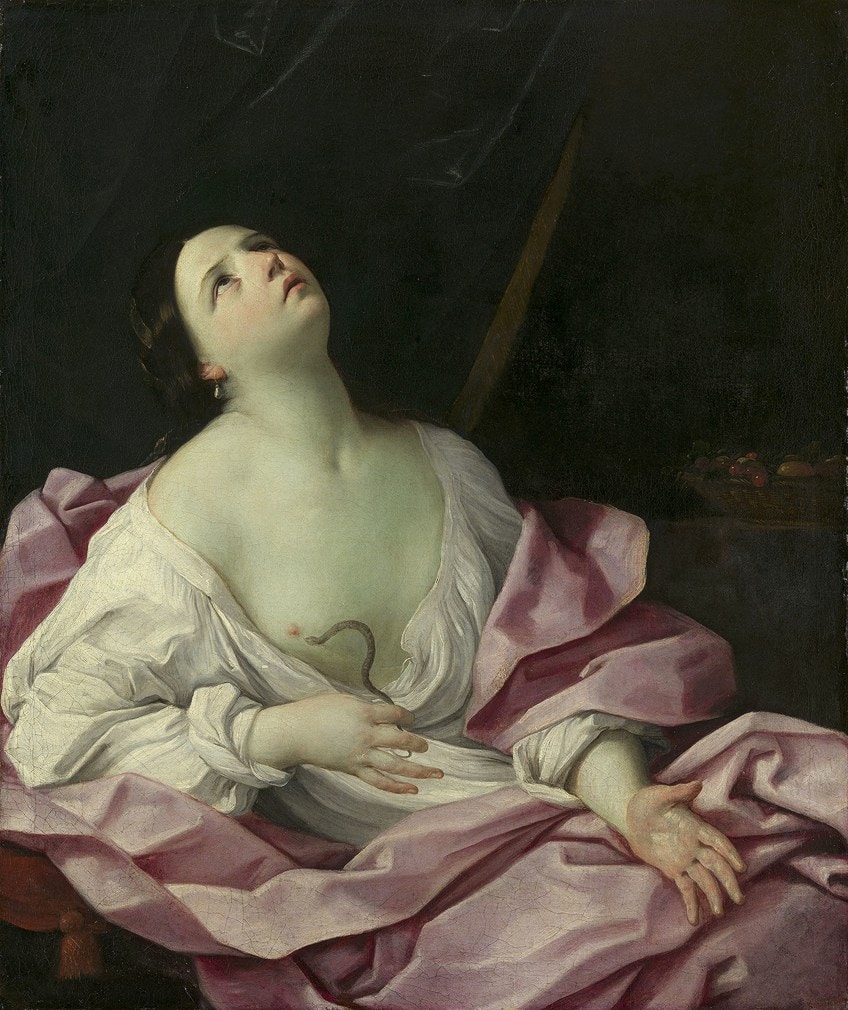
Cleopatra Dissolving the Pearl in Wine (c. 1754) by Andrea Casali
| Artist | Andrea Casali (1705 – 1784) |
| Date Painted | c. 1754 |
| Medium | Oil on canvas |
| Dimensions | 254 x 175,2 |
| Where It Is Currently Housed | National Trust Collection, Hampshire, England |
Andrea Casali was an Italian painter and art dealer who lived between 1705 and 1784. He was an artist who created prolifically and often painted for the Catholic Church, which led to him being named a Knight of the Golden Spur. He painted primarily in the Rococo art style and created paintings such as Lucretia (1750) and Allegory of Spring (c. 1760).
Cleopatra Dissolving the Pearl in Wine (c. 1754) depicts one of the popular tales surrounding Cleopatra’s meeting with Mark Antony. It is said that Mark Antony complimented Cleopatra on the fine clothing and beautiful jewelry she was wearing. As a response, she took off one of her pearl earrings, dissolved it in her glass of wine, and drank it.
This display was to show that material items were not important to her. In the painting, she is dressed in typical Rococo fashion, whilst Mark Antony wears the uniform of a Roman soldier.

Cleopatra and the Peasant (1838) by Eugène Delacroix
| Artist | Eugène Delacroix (1798 – 1863) |
| Date Painted | 1838 |
| Medium | Oil on canvas |
| Dimensions | 123 x 98 |
| Where It Is Currently Housed | Ackland Art Museum, Chapel Hill, United States |
Eugène Delacroix was a French artist who lived between 1798 and 1863. He was considered one of the most influential Romantic artists of his time and is still revered by art enthusiasts. One of his most iconic paintings is Liberty Leading the People (1830).
Cleopatra and the Peasant (1838) showcases a despondent-looking Cleopatra gazing intensely at an asp, which has been brought to her by one of her men. This emotional scene shows the moments before she took her own life. Delacroix was a lover of history, which is likely why his Cleopatra artwork is one of the more accurate depictions.
The clothing worn by her and her servant as well as her typically Greek features means that this is likely closer to how the real Cleopatra would have looked in her final moments.

The Meeting of Antony and Cleopatra, 41 BC (1883) by Lawrence Alma-Tadema
| Artist | Lawrence Alma-Tadema (1836 – 1912) |
| Date Painted | 1883 |
| Medium | Oil on canvas |
| Dimensions | 91,4 x 65,4 |
| Where It Is Currently Housed | Private collection |
Lawrence Alma-Tadema was a Dutch painter who lived between 1836 and 1912. Alma-Tadema was a celebrated artist during the Victorian period. He was best known for his Academic style and particularly enjoyed creating paintings with a Classical Roman theme. Some examples of his more popular works include Ask Me No More (1906) and A Favourite Custom (1909).
“The Meeting of Antony and Cleopatra” (1883) portrays Cleopatra’s boat arriving in Tarsus to meet Mark Antony for the first time.
Like Delacroix’s Cleopatra, we see a more historically accurate version of the Egyptian queen. She is dressed head-to-toe in fine silks and her boat is also draped in golden silk with flower garlands and animal skins, thus making for a very flamboyant entrance.
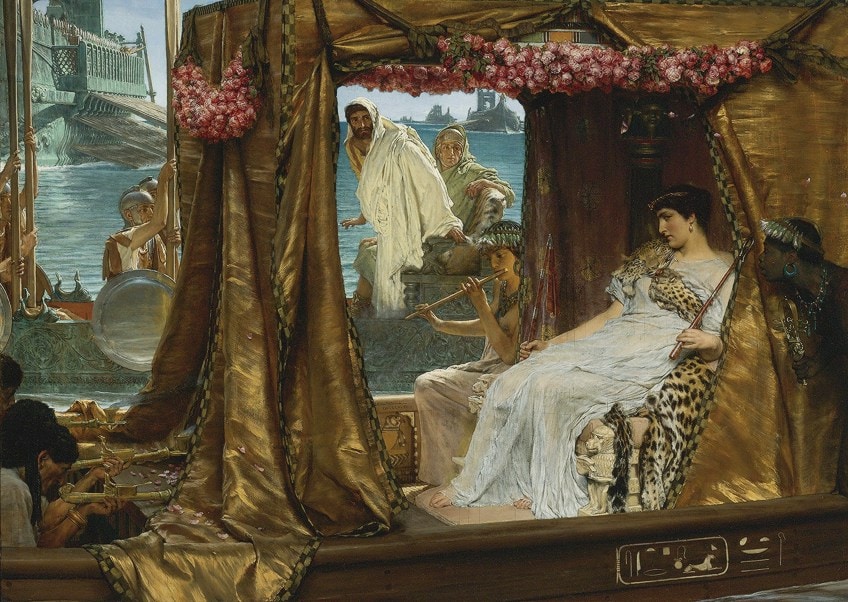
Cleopatra (c. 1888) by John William Waterhouse
| Artist | John William Waterhouse (1849 – 1917) |
| Date Painted | c. 1888 |
| Medium | Oil on canvas |
| Dimensions | 65,4 x 56,8 |
| Where It Is Currently Housed | Private collection |
John William Waterhouse was an English painter who lived between 1849 and 1917. He was loosely associated with the pre-Raphaelite Brotherhood, a group of creatives that wished to return to the art style of the Early and High Renaissance. They believed that artists such as Raphael did the world a disservice by turning towards a more simple and Naturalist art style. Waterhouse is known for paintings such as The Lady of Shalott (1888) and Ophelia (1889).
Waterhouse depicts Cleopatra in a way that you would expect an Egyptian queen to look (without the thick kohl eyeliner that is stereotypical of Egyptian art).
She is clothed in white linen and adorned with a gold crown and jewelry. He plays into the notion of Cleopatra as a femme fatale, painting her with a stormy expression. In his rendition, she is both beautiful and cunning, thus showing that she was likely a multifaceted being who was capable of fulfilling all of her common archetypes simultaneously.
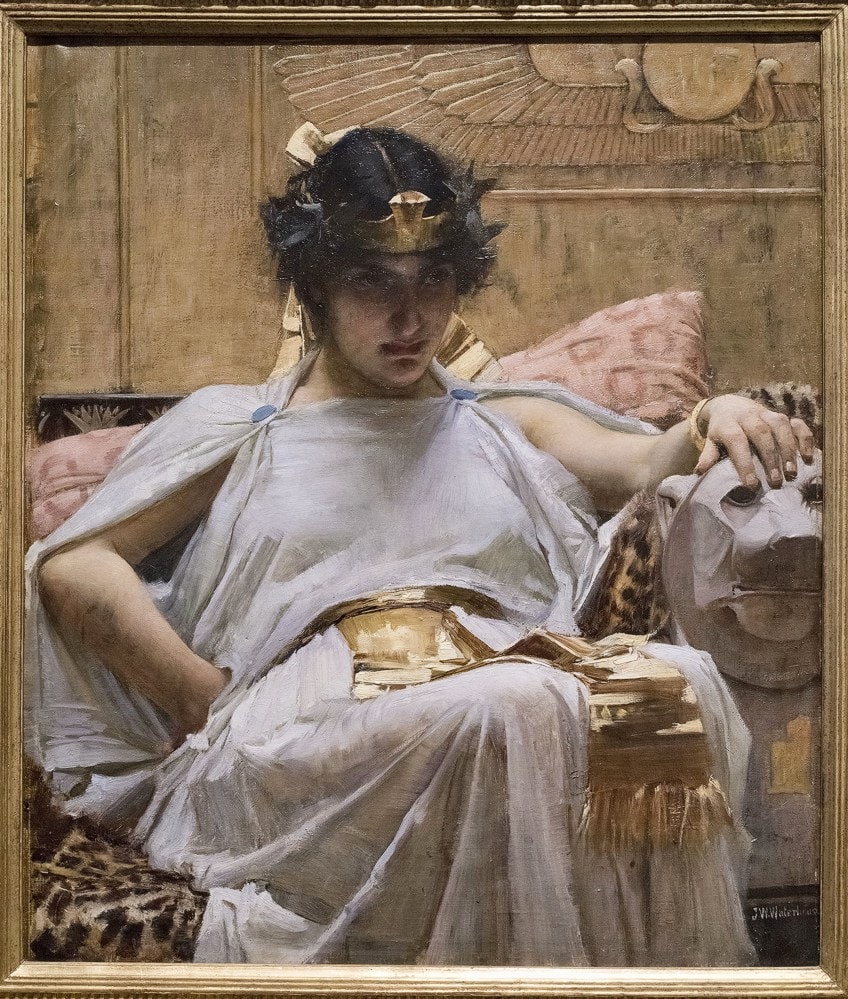
The beautiful enchantress, the conniving conqueror, or the star-crossed lover – we will never truly know which version of Cleopatra was real. Whatever the case may be, it is clear that she was an iconic woman whose story has been kept alive through art and legend. If you enjoyed reading about the last Queen of Egypt and her portrayal in art we encourage you to do some further reading as there are countless sources to choose from.
Take a look at our Cleopatra paintings webstory here!
Frequently Asked Questions
Why Was Cleopatra Famous?
Cleopatra was famous for a number of reasons. Firstly, she was the last Pharaoh of Egypt before it was taken over by the Roman Empire. Secondly, she had love affairs with two of the most powerful Roman politicians at the time, Julius Caesar and Mark Antony. The story of her eventful life was also told by William Shakespeare in Antony and Cleopatra (1607), which has remained a popular play through the ages.
Are There Any Actual Paintings of Cleopatra?
No, there are no paintings of Cleopatra which were created during her lifetime. There are Egyptian relief carvings of her presenting an offering to the goddess Isis, however, these are highly stylized. Coins have been found with her face on them, yet these also look decidedly Roman, likely as a result of her connection to Mark Antony at the time. Therefore, we have no real indication of how Cleopatra actually looked.
Why Are So Many People Fascinated by Cleopatra?
People have been fascinated with Cleopatra from when she was still alive until the current day. One of the reasons for this is the many versions of her that are popular. She is seen as a paradoxical figure, on one side a feminine beauty and on the other a ruthless politician who inspired fear in the men of her time. Others are intrigued by her dramatic love affair with Mark Antony.

Emma completed her Bachelor’s Degree in International Studies at the University of Stellenbosch. She majored in French, Political Science, and History. She graduated cum laude with a Postgraduate Diploma in Intercultural Communication. However, with all of these diverse interests, she became confused about what occupation to pursue. While exploring career options Emma interned at a nonprofit organization as a social media manager and content creator. This confirmed what she had always known deep down, that writing was her true passion.
Growing up, Emma was exposed to the world of art at an early age thanks to her artist father. As she grew older her interests in art and history collided and she spent hours pouring over artists’ biographies and books about art movements. Primitivism, Art Nouveau, and Surrealism are some of her favorite art movements. By joining the Art in Context team, she has set foot on a career path that has allowed her to explore all of her interests in a creative and dynamic way.
Learn more about the Art in Context Team.
Cite this Article
Emma, Littleton, “Paintings of Cleopatra – Why Was Cleopatra Famous?.” Art in Context. October 21, 2022. URL: https://artincontext.org/paintings-of-cleopatra/
Littleton, E. (2022, 21 October). Paintings of Cleopatra – Why Was Cleopatra Famous?. Art in Context. https://artincontext.org/paintings-of-cleopatra/
Littleton, Emma. “Paintings of Cleopatra – Why Was Cleopatra Famous?.” Art in Context, October 21, 2022. https://artincontext.org/paintings-of-cleopatra/.


